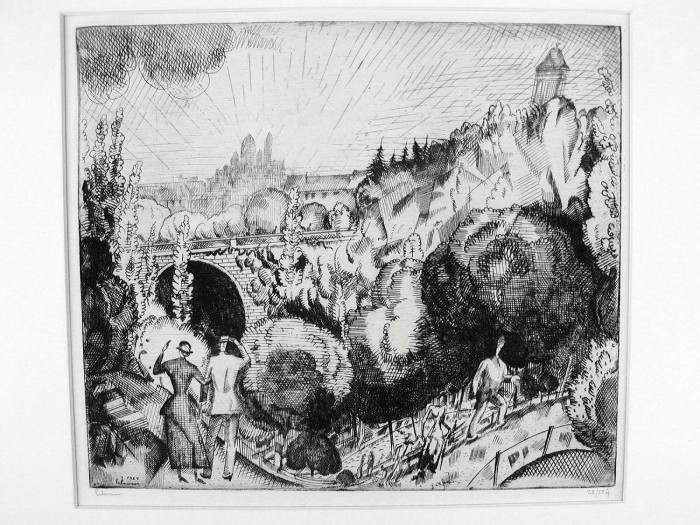Paysage au Buttes-Chaumont (2nd Planche)

Jean-Emile Laboureur (1877-1943) etching and engraving Paysage au Buttes-Chaumont (2nd Planche), 1920-21, signed and numbered ( 38/55) in pencil. Reference: Sylvain Laboureur 205. In very good condition with wide margins (remains of old hinging on margin verso, some showing through not near image). On white wove paper, 7 7/8 x 9 1/4, the sheet 10 x 13 1/2 inches, archival matting.
A fine, fresh and clear impression of this important cubist-influenced scene.
Jean-Emile Laboureur was born in Nantes in 1877. He traveled to Paris in 1895 intending to study law at the Sorbonne, but found himself drawn to the nearby famed Academie Julian, and although he never officially matriculated there, he became immersed in the Parisian art scene. Laboureur then traveled widely, staying for periods in the US and London, and studying classic art and printmaking in Italy and Germany. Although he had moved back to Paris by 1910, a time when analytical cubism was emerging in the work of Picasso and Braque, he continued working in an abstract, modernist mode, waiting until about 1913 or shortly thereafter to invent a cubist idiom all his own.
Cubism remained an important theme for Laboureur, a theme he varied, sometimes using it as a strong design or compositional component, sometimes only as a subtle background element. In Paysage aux Buttes Chaumont we see Laboureur working confidently within the idiom, using cubist elements in various ways in different parts of this complex composition. He also mixes his modes of printmaking, combining etching and engraving. This successful composition was preceded by a less successful simpler version which lacked the strong tonal contrasts, depth, and structural elements (such as the bridge lower right) of the present image.
$1250